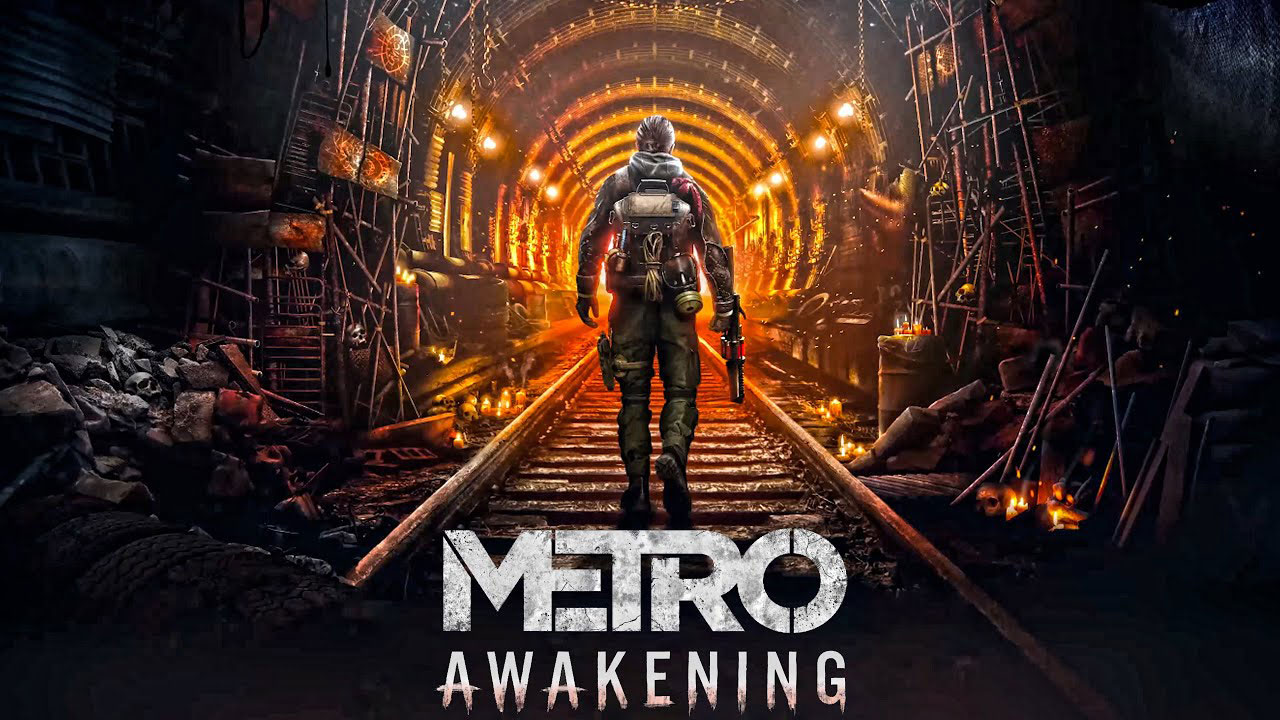With an incredibly brief time spent with 2010’s Metro 2033 and I mean first combat encounter and quit brief, the Metro series has always been one I’ve had full intention to revisit. Inspired by the best-selling post-apocalyptic novels by Dmitry Glukhovsky, the games have always had a distinct mis-en-scene with a cult following that swears by the stories they tell. So much so that the Finger Guns watch party for January’s State of Play collectively called it out when the trailer for Metro Awakening was on.
Then shots of the VR gameplay and the excitement for a new entry waned amongst the group — but not me! As someone who had recently invested in a PSVR2 I, as well as many other early adopters, were gasping for an AA or AAA experience for the platform and this for me felt like the perfect opportunity to shoot two Nosalis with one stone.
Needless to say, after Awakening, I cannot wait to spend more time in Russia’s nuclear fallout. If this is your first time with the series then don’t worry as this game acts as a prequel to the events of the previous game, as well as not leaning too heavily on the general lore of the franchise.
Developed by Vertigo Games (Arizona Sunshine 1&2), Metro Awakening maintains the similarly tight first-person shooter gameplay seen in their previous efforts. However, the gameplay has now shifted to a slower, more methodical approach. But how does the rest of the game fare? Let’s go underground to find out.
No Cure
Metro Awakening takes place in 2028, ten years after the nuclear war that ravaged the world. You play as Serdar, a local doctor for an underground colony who’s looking for his wife and the medication that can help her. This forces Serdar to go deeper into the worst parts of the metro tunnels where he faces cultists, opposing militia and some of the more psychological aspects seen in the franchise.
It’s a simple yet personable set up that comes across as unassuming for at least the first half of its runtime. After an explosive prologue, the opening hours are painfully slow at getting you invested in the narrative. You’ll spend a lot of time walking through halls talking back and forth with your friend and leader of the outpost Max about relationships, their past and the situation at hand through a two-way radio.
This goes for even the late stage moments of the game too but most dialogue is very operational. It teeters on being solely expositional with its only excuse that every other element of the game doesn’t do as good enough of a job filling out the world you inhabit for the 8-10 hours of game time. I will say though, once the pin drops and the story switches from one overly rational doctor to a man wrestling with his psyche, the slower moments are less noticeable.
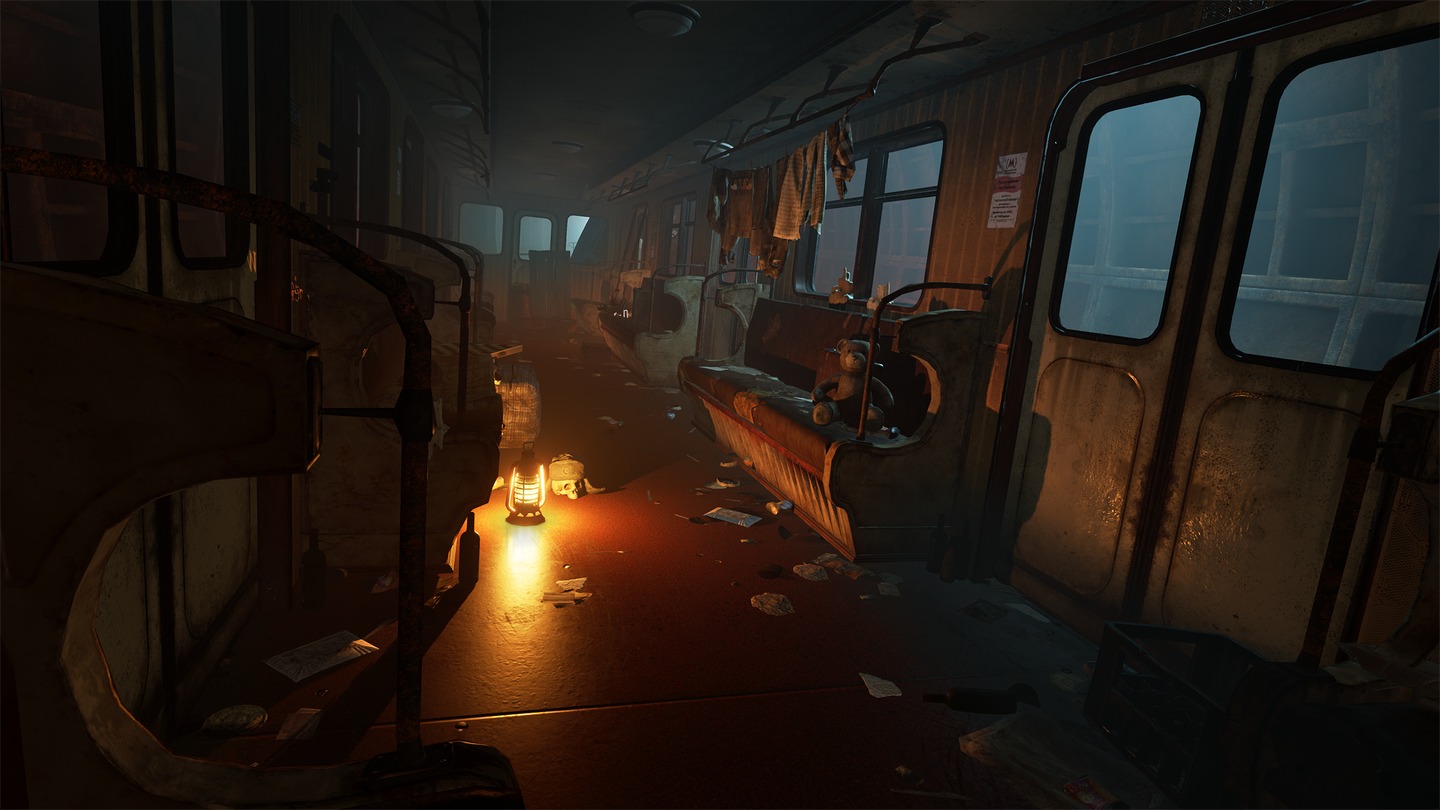
Into The Metro
The voice-overs aren’t great, a lot of it sounds like reading off a script as opposed to acting out the moments but there are some really great lines that will stick with me. Most of it pertains to the wider story of Metro and the ethos it exudes, making me want to dive further into the series. There’s an abstract terror that becomes more pervasive than the mutant animals you’ll spend most of the game killing, I just wish we spent more time in the weird and unknown.
There is a distinct lack of variety in where the journey takes you. However, some of the game’s story does play on the repeated areas you visit in a neat way that softens the blow. Everywhere is dilapidated, full of skeletons and even the odd radiated areas with green glowing mushrooms. There are still the orange hues and glaring contrast between light and darkness that keep the atmosphere of the franchise intact, but the bulk of the hallways and claustrophobic rooms share the same 2D textures that break the immersion slightly.
Things like screws or random loose wiring just look painted onto tables as opposed to a 3D element. This goes for a good chunk of the general environments you go through. It’s only completely noticeable if you’re sifting through the areas looking for ammo, health or the game’s collectibles — it just so happens that is usually the thing I’m doing the most in games. Overall, the story is a slow burn that would have been more exciting with some better dialogue. With that said, I’ve got a newfound excitement for the setting thanks to Metro Awakening as it does the right amount to sit it in the game’s history whilst being a thoughtful and contained story.
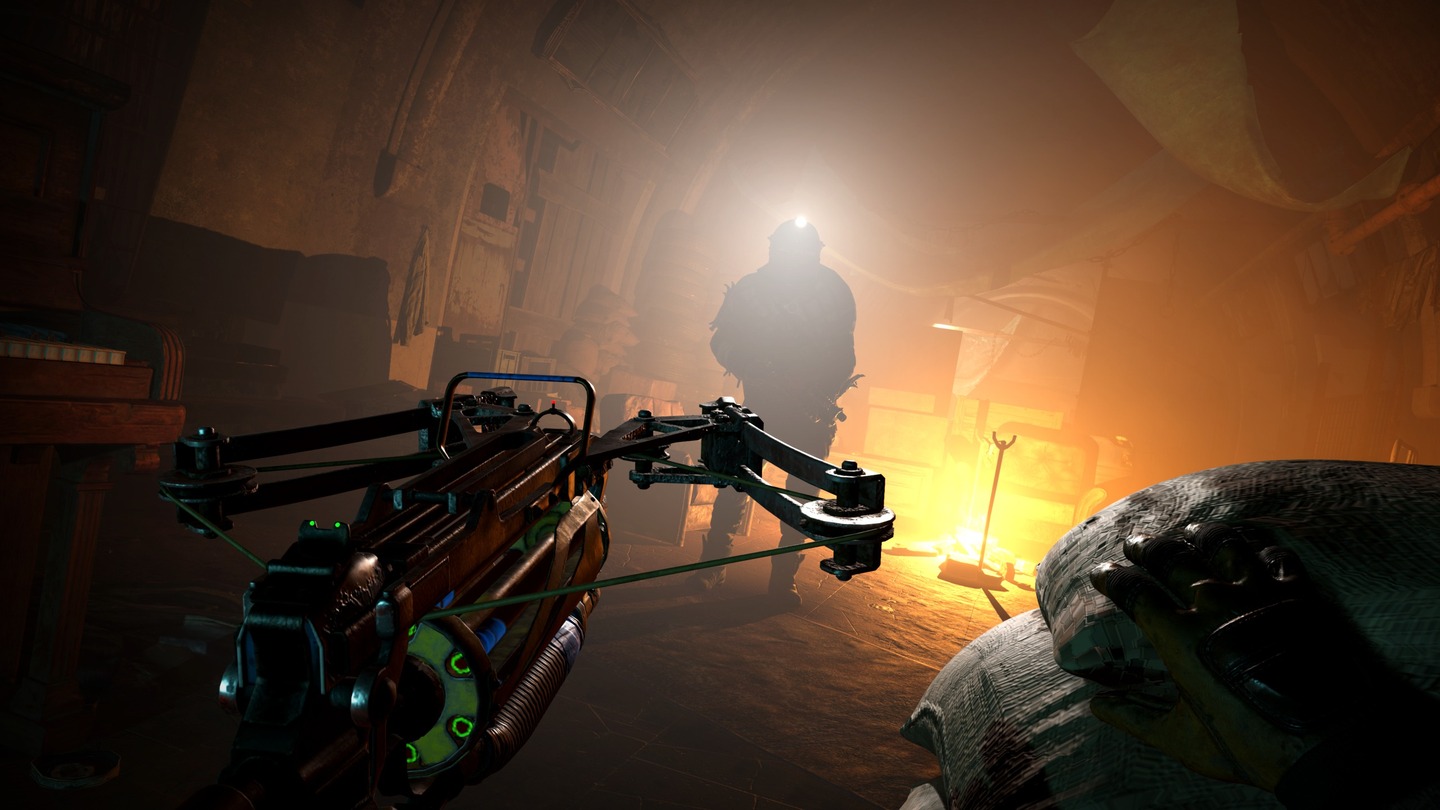
Radioactive Gunfights
Wrestling with trying to tell the narrative is the gameplay. If you’re familiar with Vertigo Games, then you know that the Arizona Sunshine series has some of the best gun-handling mechanics in VR. Here in Metro Awakening, it’s no different. You have your sidearm pistol down by your waist, a primary rifle on your shoulder and a medkit injector in your opposite hand. All of which have a multilayered approach to reloading and handling.
This goes for every weapon in the game, release the clip or magazine, grabbing ammo from your chest to replenish and then cocking back the safety to be ready to fire. It’s an excellent way of building tension into the gameplay as you go through rooms facing off against Nosalis or humans in exhilarating combat encounters. I often found myself ducked behind cover quickly checking how many bullets I had left by removing the clip, only to then reload and count my shots as I try to aim for enemy weak spots.
Whilst bullets aren’t quite the currency yet here in Awakening, they are still sparse. The game does a good job of handing you just enough — as long as you’re a good shot — to deal with the enemy, otherwise, you’re going to be someone’s dinner. Despite the quick manner in which I had to sift through my arsenal and reload my guns, the gameplay is near-flawless in keeping up with my fast gestures.
This also applies to picking up ammo from the environments to either store or reload, or detritus to throw at enemies to distract or maim. There’s a good level of magnetism and accuracy that makes the mundane tasks feel like a breeze. Oftentimes in VR I’ve found myself fumbling trying to pick things up but here it’s spot on.
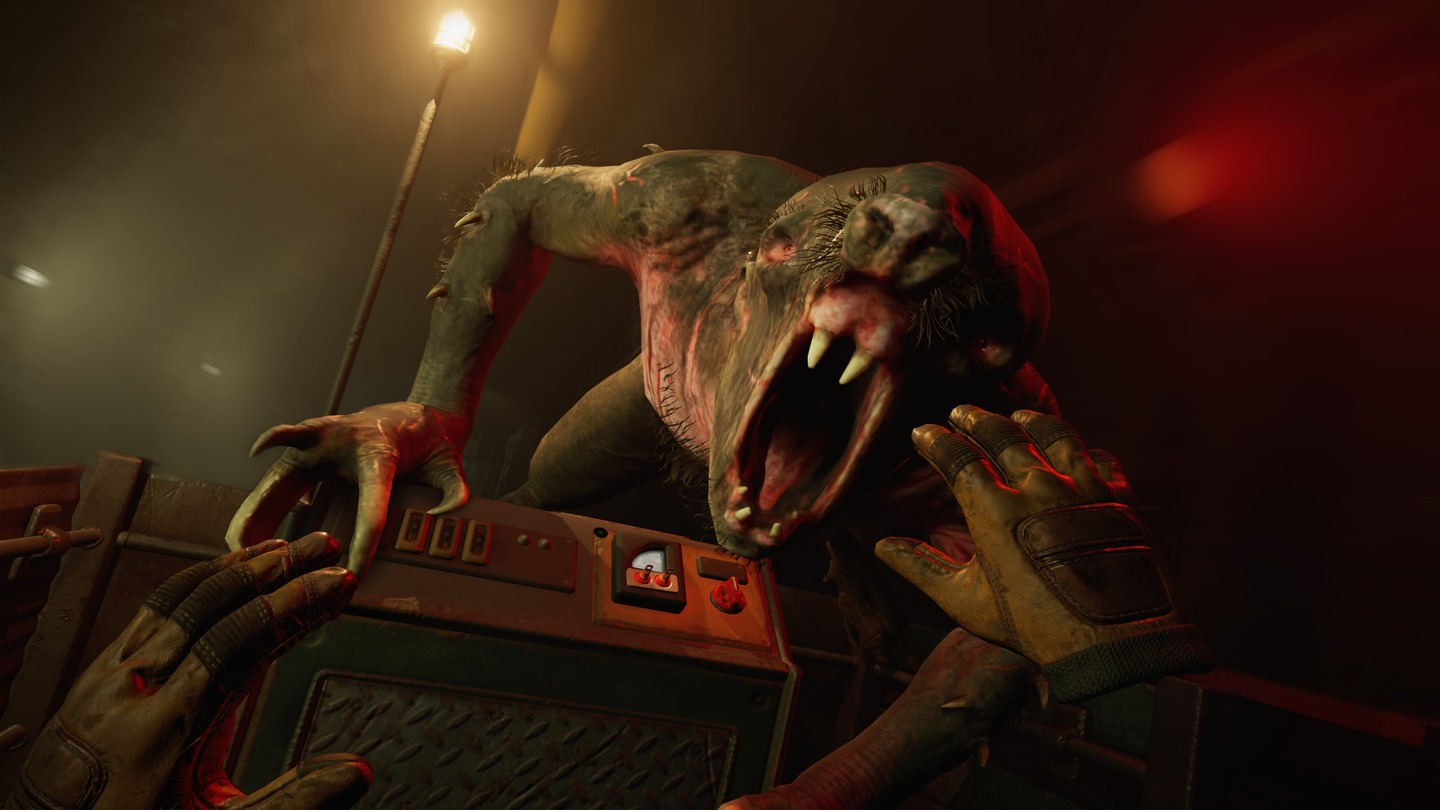
Surviving The Elements
The multilayered gameplay elements don’t just stop at the combat. You have a backpack that’ll slowly garner new items to think about during your survival. You have a headlamp that you’ll need to charge through a wind-up battery-powered doohickey, this same contraption will be used to help with some of the environmental puzzles and door opening.
I use the term puzzle lightly as everything in this game is pretty straightforward. You also have a gas mask which requires new filters to be installed when they run out of oxygen. These are stored on the backpack and you’ll need to twist them from your mask to replace them or else face a fatal dose of radiation (and restarting at the nearest checkpoint).
These mechanics are constantly on the back of your mind, as well as keeping yourself reloaded for any upcoming encounters. Metro Awakening is great at keeping that consistent feeling of dread that only you are responsible for persevering through. These are the strongest parts of the game for me and they elevate some of the elements I’m not as excited about.
The outright combat encounters are on the leaner side if you do choose the stealthy approach during the game’s more tense moments. Stealth in the game is fine enough, the AI can be easily manipulated by throwing items to distract human enemies; they also have a predictable pathing that repeats so it’s more of a case of trial and error than call and response.
Stealthing your way through is optional though, you could go in guns blazing during every encounter but your ammo stock will hurt because of it. I remained undetected throughout the game and even I struggled when some purposeful shootouts occurred in terms of supplies.
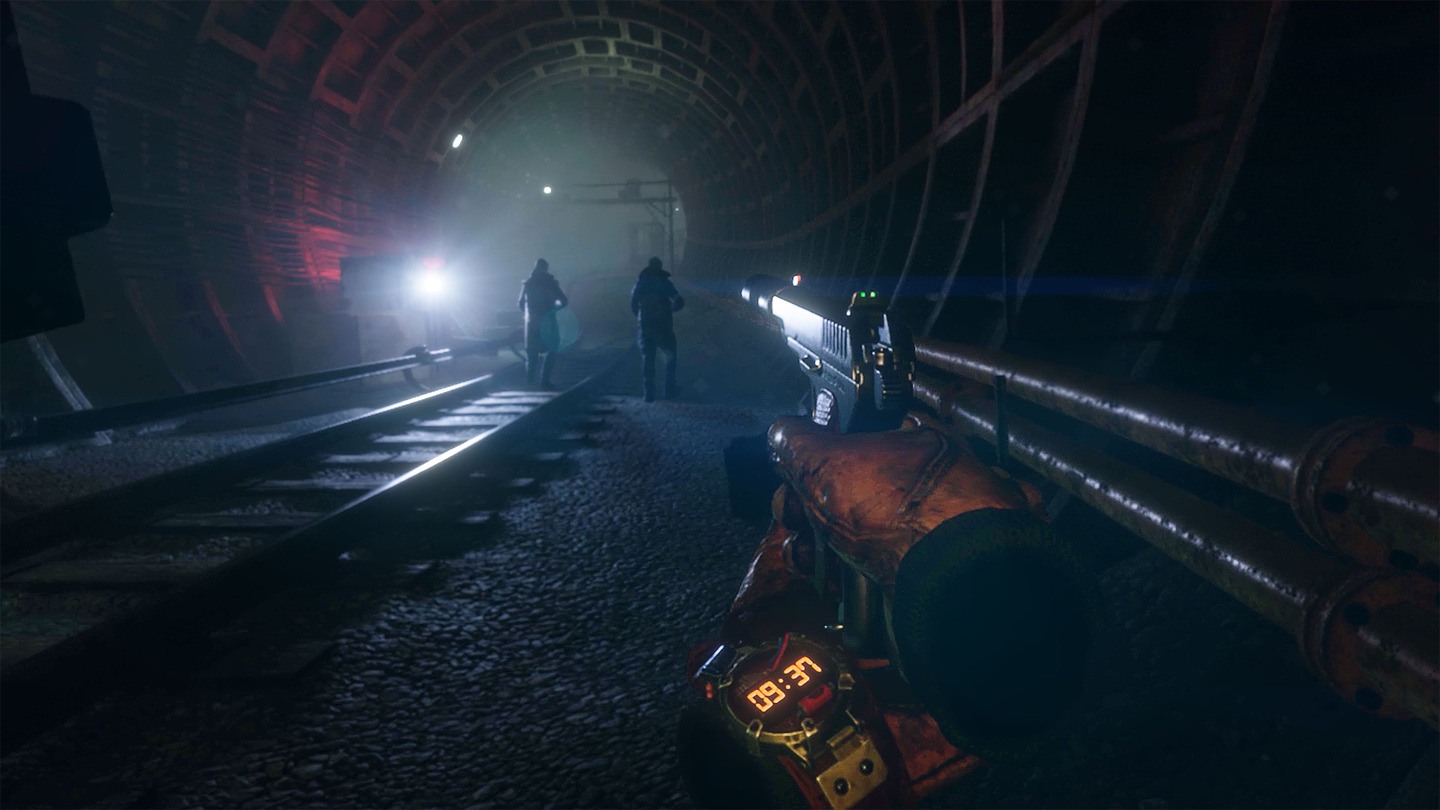
Walking To Your Fate
Outside of these encounters, the rest of it is meandering through hallways, so whilst the highs are relatively high it is the same experience repeated as soon as you learn the basics. There is a third staple of activity you do which I feel reluctant to mention because it’s horrifying, so consider yourself warned: in certain parts of the game you’ll come across radioactive spiders.
They play out similarly to other enemy encounters but instead of charging at you or flanking you for a better shooting position, they leap right onto your face and won’t give up till you shoot them. They also land on your hand if you reach for your backpack, so you’ll have to swipe them off like a bug going in for a bite. It was a nightmare come to life. I can’t say I’m a true arachnophobe but I don’t do well with them and this was hell for me. This might sound like a negative but it’s not, it brilliantly immersed me in feeling disgusted and panicked, and I just don’t want to think about it anymore.
There is an arachnophobe mode on the way so if it does affect you on a stronger level than me, maybe wait for another patch. I’ve also benefitted from playing after a post-launch patch, which has made the gum run overall better than others experienced. However, there is a lot of texture pop-in still from objects and environments meer feet away which became quite jarring to see repeatedly. The rest of the game runs smoothly though and is pretty bug-free — aside from those nasty eight-legged ones.
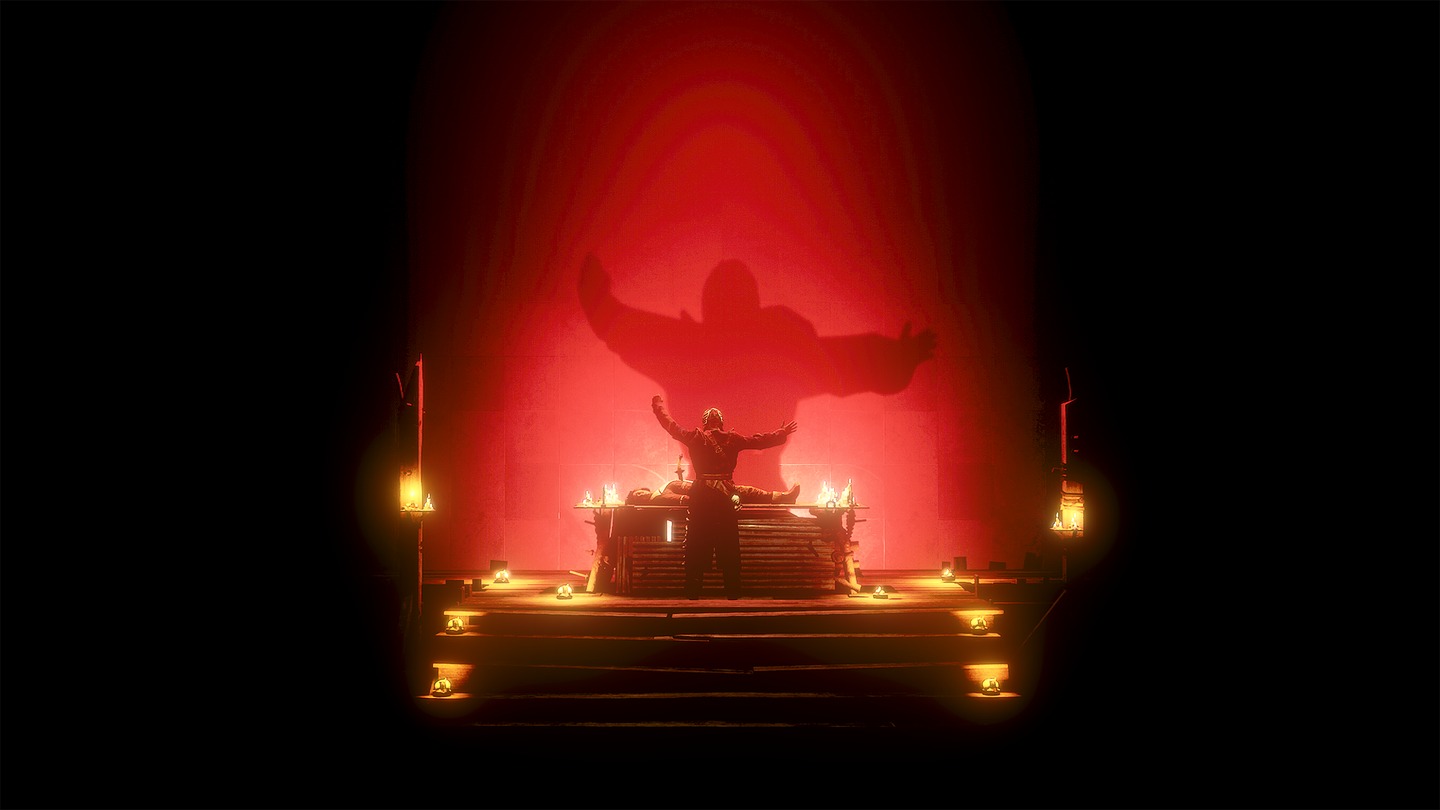
Shaking Off The Snow
While I’m on performance, Metro Awakening’s graphical fidelity doesn’t push the platform’s hardware. In terms of detail, people, monsters and objects in the environment are hit-and-miss, with only the main characters you meet getting some extra attention that sells the believability. Instead, a lot of what makes the game look good is down to the lighting.
It gives the game a great atmosphere despite some of its visual shortcomings. Couple that with the incredible detail of your backpack, the items on it and the weapons and you start to forget that some random character has a last-gen look and is speaking without their mouth moving. There are also smaller details like mutants’ eyes glowing if you have your headlamp pointing at them, or your gas mask fogging up depending on your breath that you can wipe off that. All of these details sell the immersion more than the fidelity.
I think that’s what sums up my experience with Metro Awakening. Aspects individually aren’t spectacular under a critical lens but smaller more subtle inclusions bolster the overall experience. I wish there were more obligatory shooting scenarios, less walking through corridors to let the story breathe and instead embed the story into the action, but it’s done a fantastic job of getting me invested in the world of Metro. If you’re a fan of the franchise or like the gunplay from Vertigo Games or even both, then you’ll have a good time going underground.
Metro Awakening is available now for PSVR2 (review platform), Meta Quest and PC via Steam.
Developers: Vertigo Games
Publisher: Vertigo Games
Disclaimer: In order to complete this review, we were provided with a promotional copy of the game. For our full review policy, please go here.
If you enjoyed this article or any more of our content, please consider our Patreon.
Make sure to follow Finger Guns on our social channels. Twitter, Facebook, Twitch, Spotify or Apple Podcasts – to keep up to date on our news, reviews and features.
